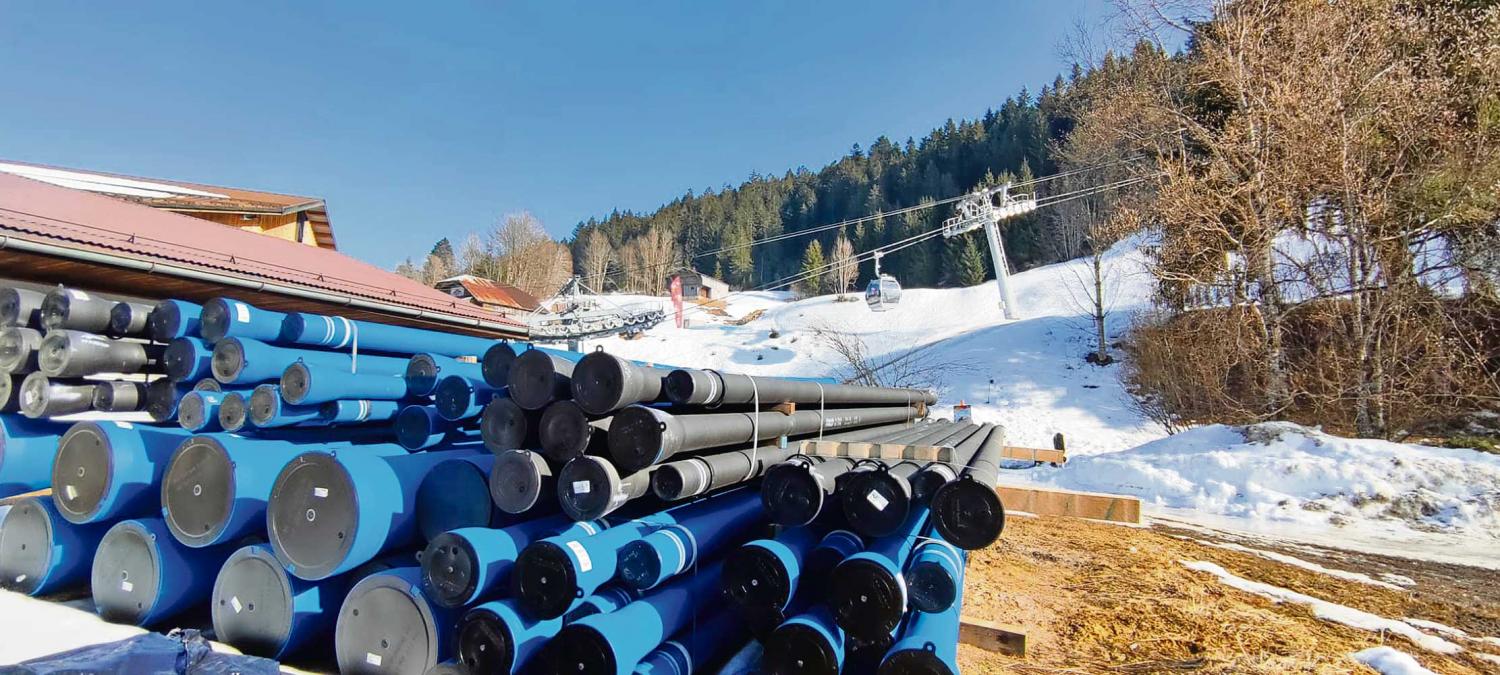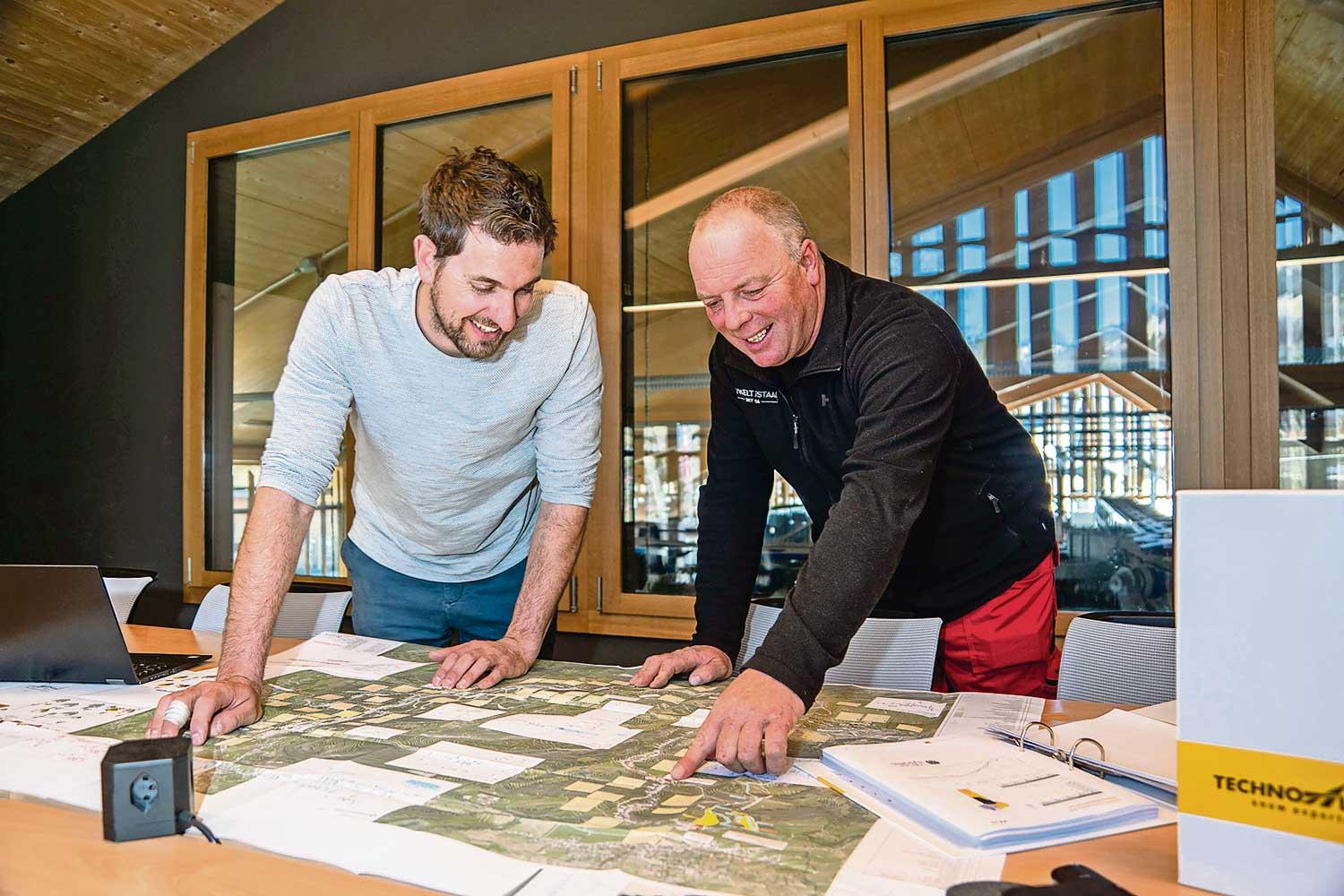Vaud grants CHF 2m for snowmaking
18.03.2022 Sports & LeisureThe snowmaking network on the Videmanette ski slopes is one of the oldest in the area of Bergbahnen Destination Gstaad (BDG). For thirty years, it has been used to produce snow for the lowest part of the piste. Later, the system was extended up to the top station. Now further investments are in the pipeline. But why? "When the facilities were built, the company had limited means, so they built cheaply, which is catching up with us now, and the state of the art before that time was not on the same level as today," explains managing director Matthias In-Albon.
Beginning in spring
First a brief overview: The entire snowmaking system in the West Sector is connected, from Gstaad to Saanen to Rougemont. Water is taken from the river Saane in Rougemont and Saanen as well as the Chalberhönibach. The snowmaking network is to be renovated in two stages. First the Rougemont-Videmanette section, then the Gstaad-Eggli section. "Many landowners are passionate about the project," says project manager Jannik Sager. That's why all the landowners on the Rougemont side have already signed the contracts. The building application for the first stage is now with the Rougemont municipality. "If things go according to plan, work will begin after the snow melts," says the project manager. The application for the additional transport line between Gstaad and the Eggli mountain station to the new toboggan run will soon go to public consultation. This transport line on the canton of Bern is generously co-financed by the canton of Vaud as part of the overall concept for the Eggli and Videmanette technical snowmaking system.
Replacing connections only
The renovation is necessary because there is a problem with the water supply between Rougemont and Videmanette. Polyethylene pipes lead from the main cast iron pipe to 52 snowmaking shafts. "The plastic hoses are made of material that is not resistant to acid, which is why they decompose and burst unexpectedly," informs Beat Welten, piste and rescue manager for the West Sector. This usually happens during the snowmaking period in the pre-winter. In such a case, the entire system has to be shut down, the leak found, the burst plastic pipes dug out and replaced. To ensure that these mishaps do not occur again, the supply system will be replaced with resistant cast iron pipes. The old material, which is still in perfect condition, will be taken to the spare parts depot and used again at the Wispile and the Rinderberg. The same North American system is in use there. This system no longer exists and consequently spare parts are no longer available.
Shafts, power and communication
BDG wants to replace half of the lances used so far with modern propeller guns and replace the existing shafts with stronger concrete shafts. "The advantage of propeller guns over lances is that they produce snow at temperatures as low as zero degrees Celsius and are much more powerful than lances," says Beat Welten. At the same time, electricity is also being installed, because the new propeller guns, unlike the snow lances, need more energy. According to Jannik Sager, there is no direct answer to the question of whether BDG's electricity bill will increase as a result. The new propeller machines have compensators that regulate power consumption according to the situation. "That's why the propeller motors are very economical." The lances, on the other hand, needed the electricity continuously and have less power. The propeller guns produce the required amount of snow in a shorter time. Therefore, the machines could be switched off earlier and the duration of power consumption reduced. The cable car company is using the excavation work on the water network to pull in all the necessary cables for communication.
Generous contribution from Vaud
The cost of the planned work for the Rougemont-Videmanette section is CHF 2.5m. For everything else, several hundred thousand francs have to be added. "Without the support of the Canton of Vaud, the implementation would not be possible," Matthias In-Albon points out. The canton of Vaud is supporting the snowmaking with an a-fonds-perdu amount of CHF 1,202,500. A further CHF 688,200 have been allocated for the transport line on the Eggli becauseit is an essential part of the West Sector. The BDG covers all remaining costs.
With the technical snowmaking at full throttle, the area is covered in snow in 60 hours. "The investment costs for such a short operating time are very high," Jannik Sager says. But: "If the area is not completely snowed in at Christmas, we lose millions in turnover every year because far fewer skiers find it attractive to ski in a small area.” So, the investment is worth it after all. In addition, there is the economic component: If the guests don't come at all, or if they switch to snow-sure destinations with effective technical snowmaking in the following years, the damage to the destination is great.
Correction to the slope
A piste correction is also being carried out on the lowest part of the Videmanette piste. "At Pierres Blanches, we want to move a mound of earth a few metres down into a land depression," informs Jannik Sager. The preparation of this mound requires a lot of resources. Not only masses of snow, but also in terms of labour, which is expensive. The canton of Vaud is supporting this piste correction with a contribution of CHF 60,000.
Based on AvS/Blanca Burri





